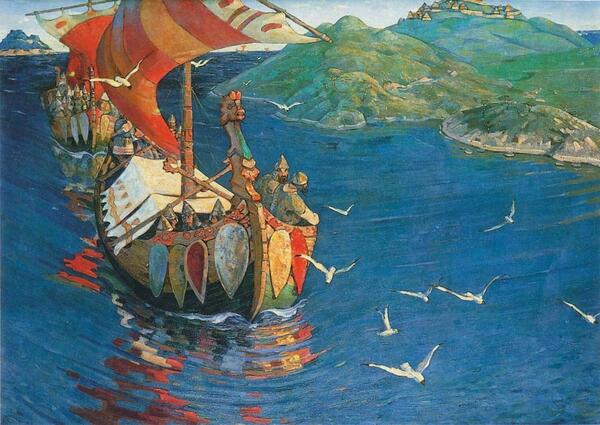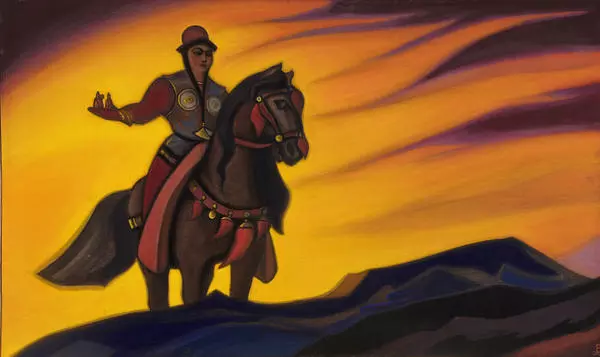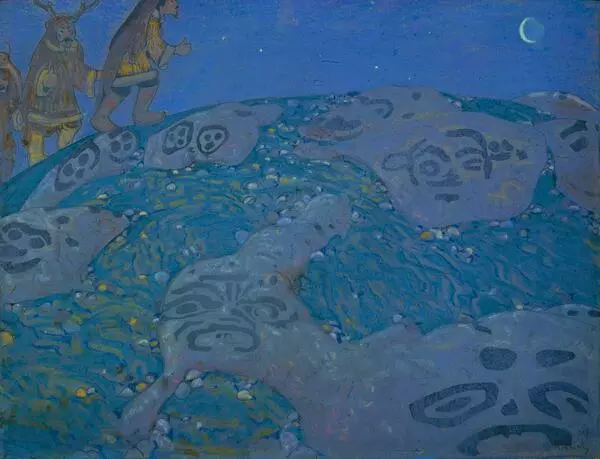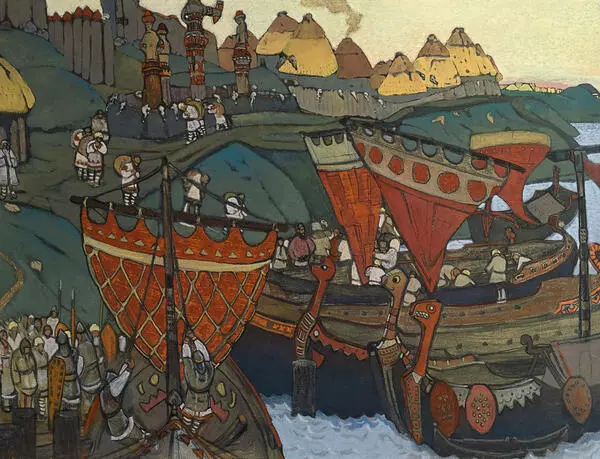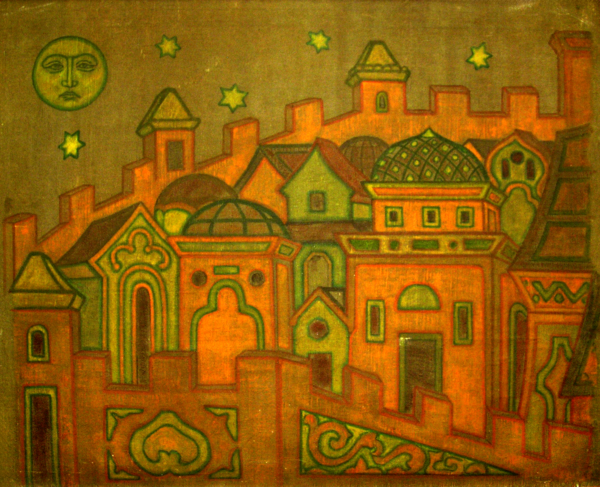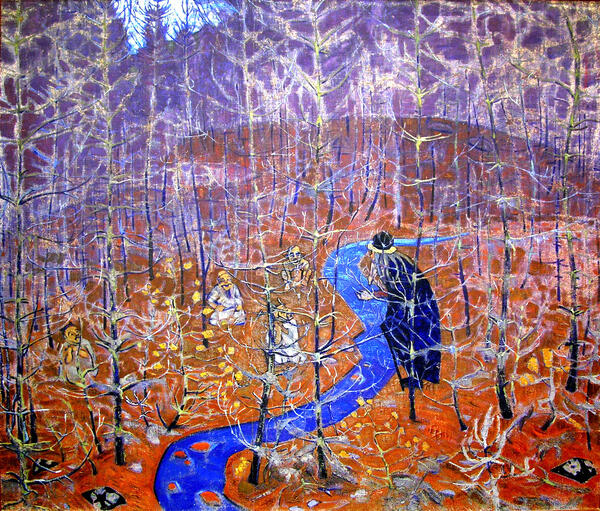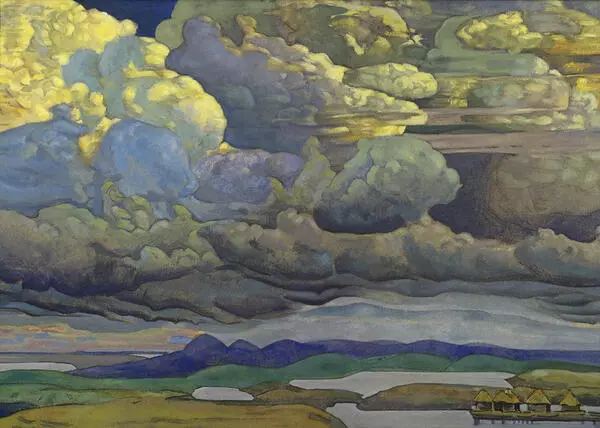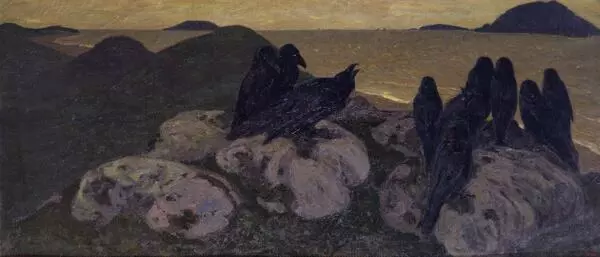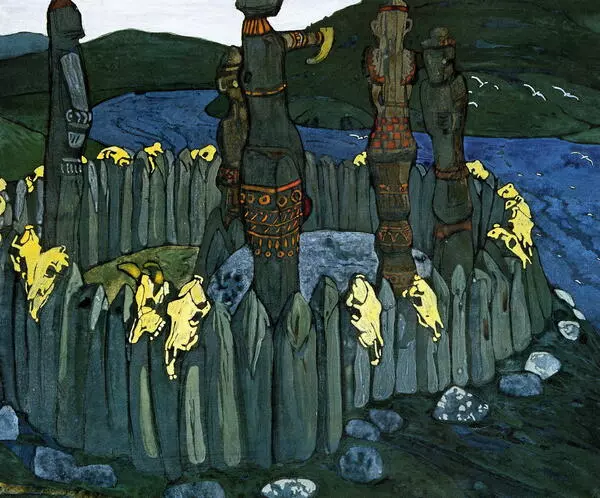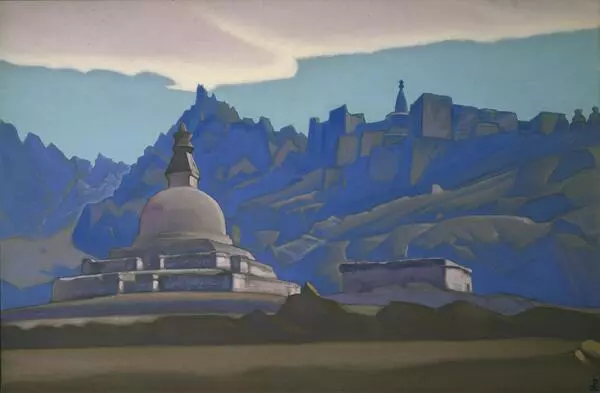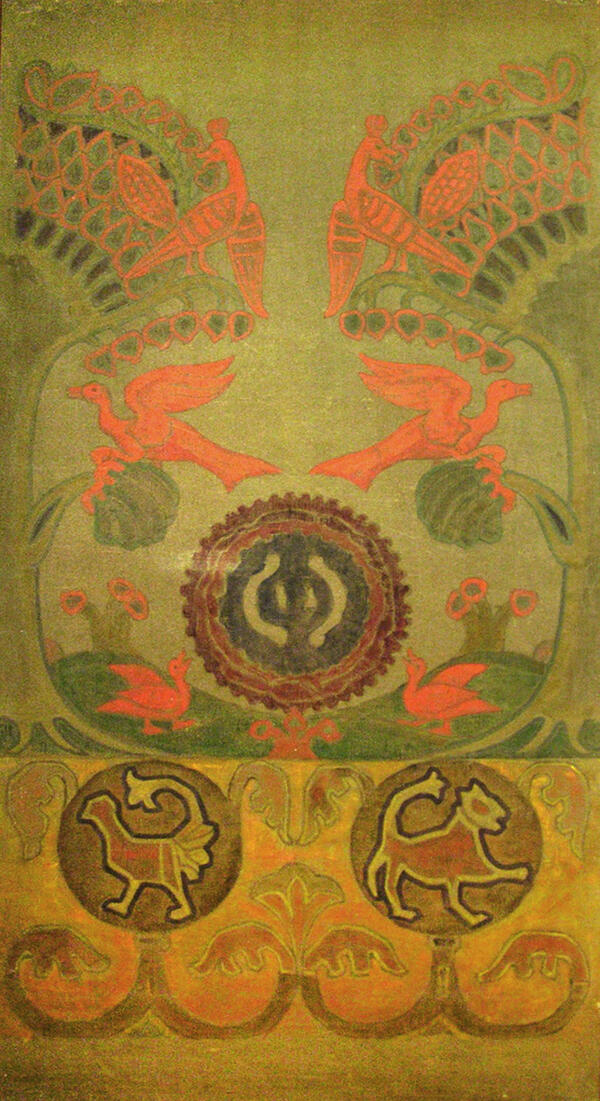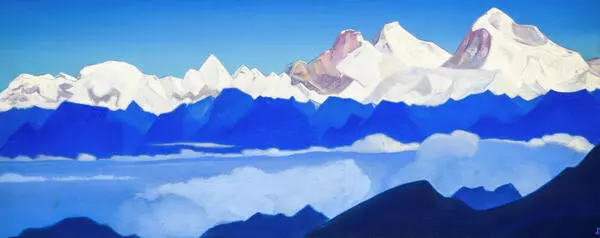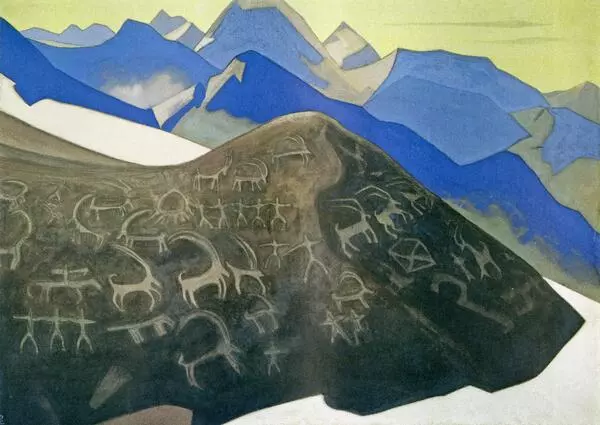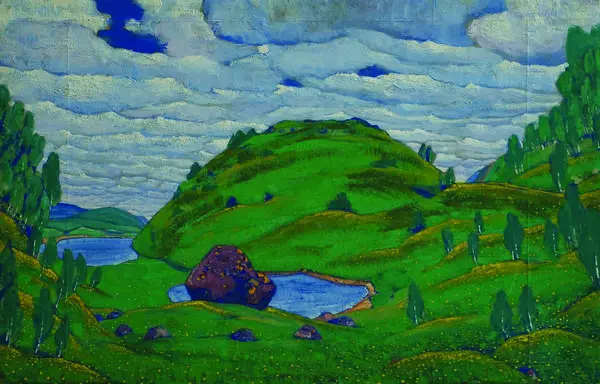The painting ‘Guests from Overseas’ is one of the most recognizable and replicated in the heritage of the artist Nicholas Roerich. It was painted in 1901 in Paris and purchased by Nicholas II for the Tsarskoye Selo Palace a year later. It is currently included in the collection of the State Tretyakov Gallery.
Guests from Overseas
Время создания
1902
Размер
55,5x75 cm
55,5x75 cm
55,5x75 cm
Техника
Cardboard, pastel
Коллекция
Выставка
28
Открыть в приложении#4
Roerich Nicholas Konstantinovich
Guests from Overseas
#2
#5
Guests from Overseas. Oil on canvas. State Tretyakov Gallery. 1901
#3
The work immediately gained universal recognition and popularity. Roerich created the painting in several versions. The collection of The Vasnetsov Brothers Art Museum represents a copy made by the artist using the pastel technique.
After graduating from the Imperial Art Academy, Nicholas Roerich toured the cities of Russia, where he studied ancient Russian art, made sketches and studies. ‘It was wonderful and scary to realize that the Varyags boats were sailing in the same places – the free planes of the rich Sadko – where the Novgorodian army was sailing to the fateful Shelon battle…’ - that is how Roerich wrote about the places he visited in 1899. After this trip, he created the cycle ‘The Beginning of Rus. Slavs’. The picture has the author’s title “Folk Painting”, which refers to the national motives. The painting was made in 1901, during the time of popularization of the Russian style and decorativeness in art.
The presented work is done in the pastel “dry” technique. Roerich did not mix colors, but separated them from each other with clear contours. He transferred the pastel pigment directly onto the cardboard without using a brush and water. Pastel among artists is considered more as an auxiliary tool than the main means of painting. It is usually used for sketching. Only in 1870 in Paris was created the Society of Pastel Painters, which included Auguste Renoir and Henri Toulouse-Lautrec.
The work clearly shows the influence of Arkhip Kuindzhi, Roerich’s teacher, as well as the latter’s love for theatrical and decorative art. He created sets and costumes for performances and several productions of Sergei Diaghilev’s Russian Seasons. This work also contains a national atmosphere; it is based on simplification of form, decorativeness and sonority of color. The painting has one more feature - the artist did not depict a clear face in any of the characters. This characteristic feature is also present in many other works of Nicholas Roerich. The pastel technique gives the work a velvety effect, making it look like an ancient Russian fresco. The painting is filled with elements that abound in the works of ancient Russian masters of applied art - boats, red sails, and a dark blue river.
Later, the artist moved away from the Russian theme and focused on oriental motives and philosophical searches. Together with his sons, he organized many expeditions to the Asian region. In 1928, Nicholas Roerich prepared the Roerich Pact, a draft Treaty on the Protection of Cultural Property, which became the first international act dedicated to the protection of cultural property. For this project, Roerich was twice nominated for the Nobel Peace Prize.
After graduating from the Imperial Art Academy, Nicholas Roerich toured the cities of Russia, where he studied ancient Russian art, made sketches and studies. ‘It was wonderful and scary to realize that the Varyags boats were sailing in the same places – the free planes of the rich Sadko – where the Novgorodian army was sailing to the fateful Shelon battle…’ - that is how Roerich wrote about the places he visited in 1899. After this trip, he created the cycle ‘The Beginning of Rus. Slavs’. The picture has the author’s title “Folk Painting”, which refers to the national motives. The painting was made in 1901, during the time of popularization of the Russian style and decorativeness in art.
The presented work is done in the pastel “dry” technique. Roerich did not mix colors, but separated them from each other with clear contours. He transferred the pastel pigment directly onto the cardboard without using a brush and water. Pastel among artists is considered more as an auxiliary tool than the main means of painting. It is usually used for sketching. Only in 1870 in Paris was created the Society of Pastel Painters, which included Auguste Renoir and Henri Toulouse-Lautrec.
The work clearly shows the influence of Arkhip Kuindzhi, Roerich’s teacher, as well as the latter’s love for theatrical and decorative art. He created sets and costumes for performances and several productions of Sergei Diaghilev’s Russian Seasons. This work also contains a national atmosphere; it is based on simplification of form, decorativeness and sonority of color. The painting has one more feature - the artist did not depict a clear face in any of the characters. This characteristic feature is also present in many other works of Nicholas Roerich. The pastel technique gives the work a velvety effect, making it look like an ancient Russian fresco. The painting is filled with elements that abound in the works of ancient Russian masters of applied art - boats, red sails, and a dark blue river.
Later, the artist moved away from the Russian theme and focused on oriental motives and philosophical searches. Together with his sons, he organized many expeditions to the Asian region. In 1928, Nicholas Roerich prepared the Roerich Pact, a draft Treaty on the Protection of Cultural Property, which became the first international act dedicated to the protection of cultural property. For this project, Roerich was twice nominated for the Nobel Peace Prize.
#6
The Vasnetsov Brothers Art Museum in Vyatka
читать дальшескрыть
00:00
00:00
1x
Guests from Overseas
Время создания
1902
Размер
55,5x75 cm
55,5x75 cm
55,5x75 cm
Техника
Cardboard, pastel
Коллекция
Выставка
28
Открыть в приложении
Поделиться


